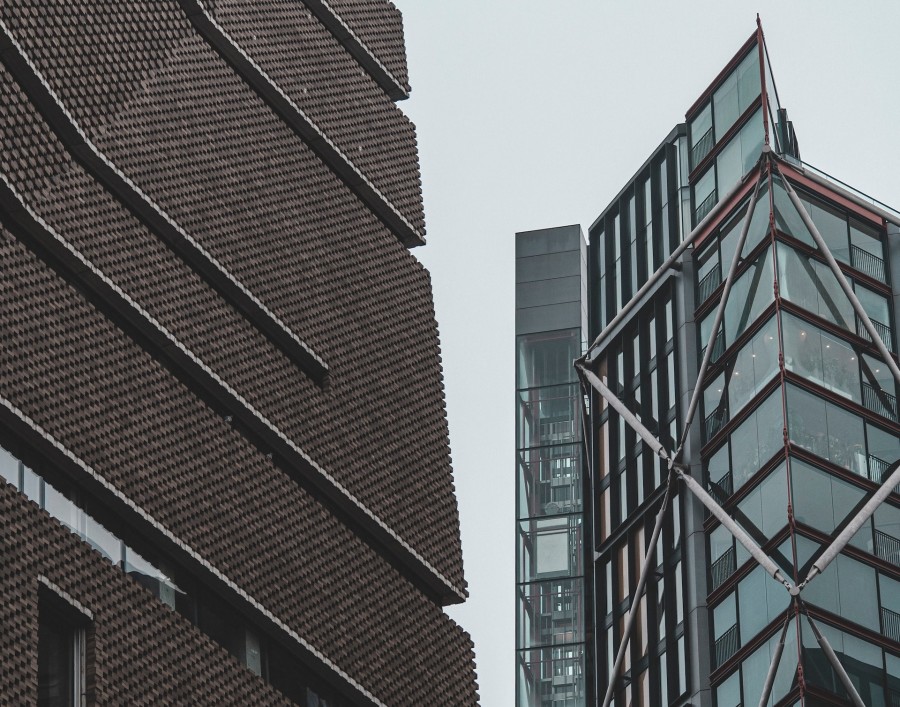Fearn and Others v Board of Trustees of the Tate Gallery
A decision of the UK Supreme Court in the long-running dispute between a public art gallery and its residential neighbours has provided a rare example of the law of private nuisance being extended to visual intrusion.
Background
In 2016 London's Tate Modern art gallery opened a public viewing gallery providing 360-degree views of the city. The southern walkway of the platform looked directly into the "winter garden" rooms of several apartments in nearby residential development, Neo Bankside. The developer had intended to use the rooms as internal balconies, but residents used them as living space.
The long leasehold owners of apartments on the 13th, 18th, 19th and 21st floors of Neo Bankside commenced proceedings against the Tate Modern seeking an injunction to prevent members of the public from looking into their apartments from the viewing gallery walkway, or alternatively, an award of damages.
The owners' claim was based on the law of private nuisance.
Trial judge's decision
In 2019 the trial judge, Mann J, found that the Tate Modern’s use of the top floor as a public viewing gallery was reasonable.
Mann J held that, in purchasing an apartment that necessarily had less privacy by reason of the glass design, the owners had "self-induced exposure to the outside world" and would have to "tolerate what the design has created"1. Mann J found that such self-induced exposure could not create liability in nuisance.
The owners appealed the first instance decision.
Court of Appeal decision
The Court of Appeal found the trial judge’s reasoning involved two material errors in applying the principles of nuisance.
Ultimately, however, the Court of Appeal dismissed the appeal, determining that the viewing gallery "overlooked" the apartments and simply “overlooking” did not constitute a nuisance.
The owners appealed to the Supreme Court.
Supreme Court decision
The majority (Lord Leggatt, with whom Lord Reed and Lord Lloyd-Jones agreed) upheld the appeal, finding in favour of the owners on the basis that the public viewing gallery constituted a nuisance.
In doing so, the Supreme Court set out a detailed summary of the history and elements of nuisance, before applying the elements to the owners' complaint.
Nuisance
The majority noted that "at a general level", private nuisance is the balancing of “the right of the occupier to do what he likes with his own land, and the right of his neighbour not to be interfered with”2. To maintain such balance, not all interferences with an occupier's land will amount to a nuisance.
The first matter to be considered is whether the defendant's use of their land caused a "substantial interference" with the plaintiff's land.
Substantial interference
The majority noted that in determining whether an interference amounts to a nuisance, courts have found the interference must be “substantial” (or "real" or “material”) rather than a "minor annoyance". The test is objective and judged by the standards of an ordinary person in a plaintiff's position.
Ordinary use of the defendant’s own land, the concept of "reasonable user" and reciprocity
It is also necessary to consider whether the act complained about was an "ordinary use" of the defendant's land, and whether the act in question was "conveniently done". Even where a defendant’s use of land substantially interferes with the ordinary use of a plaintiff's land, it will not give rise to an actionable nuisance if the defendant is simply using their land in an ordinary and convenient manner. The majority noted the phrase "conveniently done" means "done with proper consideration for the interests of neighbouring occupiers".
On this issue, the majority upheld the "reasonable user test" expounded in Bamford v Turnley3 that “those acts necessary for the common and ordinary use and occupation of land and houses may be done, if conveniently done, without subjecting those who do them to an action.” The majority indicated this was not a test of reasonableness.
Adopting this premise, the majority found it was not necessary for the common and ordinary use of the Tate Modern's land to construct a viewing platform ─ specifically, it was not a "necessary or ordinary incident of operating an art museum"4.
On this issue, the minority (Lord Sales and Lord Kitchin) recognised that “...whilst a defendant will ordinarily not be liable in nuisance when its use is ‘common and ordinary’, it does not follow that a defendant will necessarily be liable for nuisance where a relevant interference with the claimant’s enjoyment of their land is caused by use by the defendant which is not ‘common and ordinary'5."
The majority stated the following regarding the trial judge's findings on the issue of reciprocity:
"[The trial judge] treated the rule of give and take as if it were an element of such an assessment of 'reasonableness' rather than a principle of reciprocity and equal justice. And he asked himself whether the nature of the Tate [Modern]’s use of its land is 'reasonable', instead of asking whether it is a common and ordinary use.
Having asked himself the wrong question, the answer given by the judge was, unsurprisingly, that operating a viewing gallery is not an inherently unreasonable activity in the neighbourhood... Nowhere did the judge consider whether the operation of a viewing gallery is necessary for the common and ordinary use and occupation of the Tate’s land. Had he done so, he would have been bound to conclude that, as in Bamford v Turnley itself, the Tate was not using its land 'in a common and ordinary way, but in an exceptional manner'."
The "locality principle"
The majority also considered the locality of the Tate Modern. The majority acknowledged that "floor-to-ceiling windows" in an urban, inner-city environment come at a price in terms of privacy, and may enable a property to be seen by neighbours.
However, the majority found that such an intrusion should be distinguished from a neighbour (i.e. the Tate Modern) actively inviting members of the public to look out from its property at views, which included views of the owners.
On this principle, the minority stated “...not every new use of land which is not in accordance with common and ordinary usage in a locale is an actionable nuisance, since otherwise there would be no scope for development and change and the vibrancy of modern life would be stultified6".
Freedom to build
The majority considered the principle of "freedom to build" (although construction was not in issue in this case).
The majority noted the right to build is fundamental to the common and ordinary use of land, as it involves the "basic freedom to decide whether and how to occupy" land7.
Accordingly, the Court noted that interference from construction will not constitute actionable nuisance if the construction (or demolition) is “conveniently done” and reasonable steps are taken to avoid undue inconvenience to neighbours.
Public interest
The final element of nuisance addressed by the majority was the "public interest principle". The majority found it was not a defence to a claim for nuisance that the activity of the defendant constituted a public benefit.
On this issue, the majority considered both the trial judge and the Court of Appeal were "influenced" by the perceived "public interest" in the use of the Tate Modern's viewing gallery. The majority found public interest was not relevant to liability, only to an appropriate remedy. The majority stated:
"The point of the law of private nuisance is to protect equality of rights between neighbouring occupiers to the use and enjoyment of their own land when those rights conflict. In deciding whether one party’s use has infringed the other’s rights, the public utility of the conflicting uses is not relevant."
The majority noted while the public interest may justify damages in place of an injunction to restrain the activity in question, public interest cannot justify a neighbour being denied recompense.
Visual intrusion as a nuisance
The majority indicated the "sole reason" the Court of Appeal did not find the Tate Modern liable in nuisance was because liability in nuisance does not extend to “overlooking”.
While the majority agreed with this proposition, it found the claim was not about "overlooking". Rather, the claim arose from a "visual intrusion", and there was precedent to support the position that a visual intrusion could constitute a nuisance.
The majority stated the owners did not take issue with the Tate Modern "overlooking" their apartments, but rather the gallery's use of its building. Specifically, the owners took issue with the gallery actively inviting the public (noting an annual attendance of approximately half a million people) to look out from the top of its premises, which meant members of the public were invited to look into the owners' apartments8.
The majority found there was precedent to support such visual intrusion as constituting a nuisance.
Application of principles of nuisance
Having regard to the elements required to establish nuisance, the majority found that "beyond doubt" the viewing and photography taken from the Tate Modern’s viewing platform caused a substantial interference with the ordinary use and enjoyment of the claimants’ properties9. Accordingly, the owners' claim in nuisance was successful.
Dissenting judgment
The dissenting reasons of Lord Sales (with whom Lord Kitchin agreed) indicated support for the trial judge's reasoning and attempt to balance the rights of the owners and the Tate Modern. The minority interpreted the "reasonable user" as follows:
“reasonable user means reasonable having regard to the rights and interests of both neighbours, so that a fair balance is maintained between them, judged in the context of the character of the particular neighbourhood where they are located”10.
Lord Sales indicated that, in this case, the objective balancing of the owners' rights with those of the Tate Modern would suggest the viewing gallery did not constitute a nuisance. Specifically, the trial judge was correct to assess the nuisance claim by reference to the objective standard and finding that "[t]he owners...could not turn the operation of the viewing gallery into a nuisance by reason of the development of their own property according to a design which was out of line with the norm for the area".
Going forward
As the majority noted, cases on visual intrusion constituting a nuisance are rare, but given ongoing developments in technologies there is potential for the number of such cases to increase. This case makes it clear the "reasonable user test" should apply to claims of this nature, insofar as they concern a visual intrusion. However, we suspect this test will be challenged as "common and ordinary" uses of land develop with technology.
Claims of visual intrusion may also rise as high-density housing increases in cities. While standard residential buildings are not likely to give rise to claims of visual intrusion, other high-rise buildings may face difficulties if they do not constitute a "common and ordinary" use of land.
Although the judgment is not binding in Australia, as this is the most recent decision on nuisance, and it sets out in detail the elements of private nuisance, we expect Australian courts will have some regard to the findings in the future. Nevertheless, whether Australian courts adopt the findings remains to be seen, especially considering the decision was not unanimous.
1 See [205] of Fearn & Ors v The Board of Trustees of the Tate Gallery [2019] EWHC. 246 (Ch) Fearn v Tate [2019] EWHC 246 (Ch).
2 See [18] and Sedleigh-Denfield v O’Callaghan [1940] AC 880, 903.
3 (1862) 3 B & S 62, 83.
4 [50].
5 [167].
6 [225].
7 [37].
8 See [92].
9 [48].
10 [211].
Image by Joseph Garrett on Unsplash.
All information on this site is of a general nature only and is not intended to be relied upon as, nor to be a substitute for, specific legal professional advice. No responsibility for the loss occasioned to any person acting on or refraining from action as a result of any material published can be accepted. Lander & Rogers is furthermore committed to providing legal advice and content that is factual, true, practical and understandable. Learn more about our editorial policy.
 Client portal
Client portal












